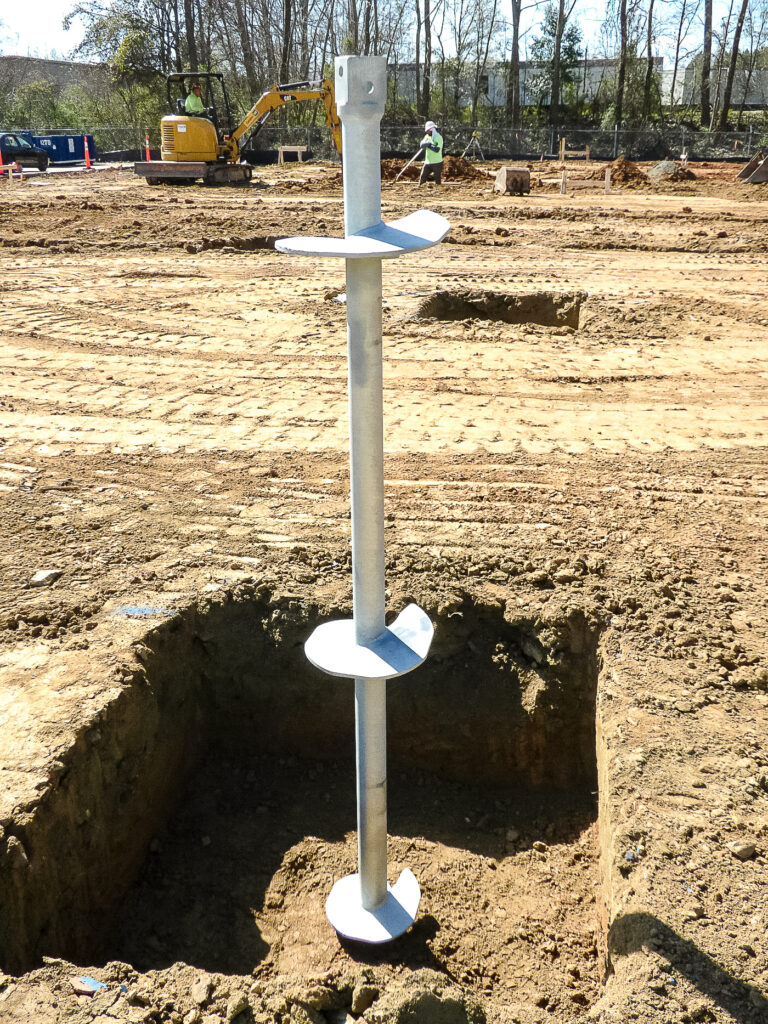Helical piles (also known as screw piles or helical piers) are among the most versatile deep foundation systems available today. Modern helical piles consist of steel shafts with one or more helical plates that literally screw into the ground, providing both end-bearing and frictional resistance.

Applications
Helical piles are used in both new construction and foundation repair projects. For new structures, they serve as deep foundations where conventional footings are unsuitable due to weak or compressible soils. For existing buildings, they provide an efficient solution for underpinning, settlement stabilization, and load transfer without extensive excavation or disruption.
Advantages
- Compact Equipment: Installed using small, track-mounted machinery – ideal for confined or interior spaces.
- Rapid Installation: No concrete curing time; loads can be applied immediately after installation.
- Minimal Vibration: Ideal for sensitive structures or adjacent facilities.
- All-Weather Capability: Can be installed year-round with minimal site preparation.
- Predictable Performance: Installation torque directly correlates to load capacity, providing built-in quality control.
Use in Corrosive Environments
One of the most common questions we receive is whether helical piles can be used in corrosive soils. The answer is yes, with proper protection.
Helical piles are typically fabricated from carbon steel, which can corrode when exposed to moisture, oxygen, and certain soil conditions. In most inland projects with moderate soils, standard hot-dip galvanizing provides ample protection for the design life of the structure.
For more aggressive environments, such as coastal or industrial sites, additional measures can be taken:
- Hot-Dip Galvanizing: A zinc coating provides sacrificial protection and greatly extends service life.
- Corrosion Allowance: Slightly thicker steel sections can be used to offset long-term material loss.
- Cathodic Protection: In highly aggressive conditions, sacrificial anodes or small electrical systems can actively protect the steel.
- Barrier Coatings: Epoxy or polymer coatings can provide added resistance when carefully applied and handled.
When properly designed and protected, helical piles perform reliably even in challenging environments, offering long-term stability with minimal maintenance.
Summary
Helical piles offer a clean, efficient, and reliable alternative to driven or cast-in-place foundations – particularly where access, speed, or soil conditions pose challenges. Their versatility makes them ideal for both new construction and remedial foundation applications across a wide range of environments. Ready to build on a smarter foundation? Contact our team today to learn how helical piles can strengthen your next project from the ground up.
